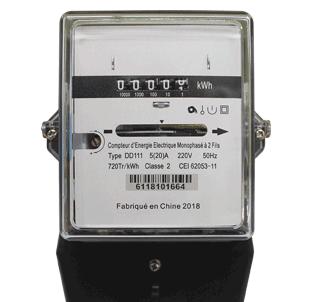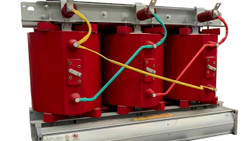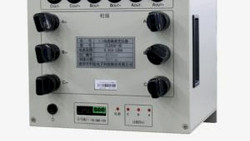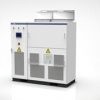The proper energy registration is the essential part for energy meters. Bills are issued according to the register readings.
The IEC62052-11:2020 is only stating a Meter Constant test (see #7.4). So, the question came up: Why are most meter testers still doing a register test?
What is the difference?
When doing a register test, you inject a certain amount of energy to the meter. Then you compare the registered energy inside the meter with the injected energy recorded by the reference standard.
For a meter constant test, you count the number of pulses or revolutions and compare with the increment of the meter energy register.
The History
You most likely still remember electromechanical induction type energy meters (Ferraris meters).

These meter consists of a rotating aluminum disc mounted on a spindle between two electromagnets. The speed of rotation of the disc is proportional to the power.
The aluminum disk is connected to a spindle which has a gear. This gear drives the register and the revolution of the disk are counted and displayed on the register which has a series of dials and each dial represent a single digit.
If there is a problem in the transmission to the register, the accuracy meter test can pass, while the register is counting wrong. Most issues occur due to manufacturing tolerances or worn out gear drives.
Electronic Energy Meters

These meters have a digital energy data acquisition. All electronic energy meters must have a metrological pulse output. This is typically an illuminated diode.
Each flash of the diode represents a certain quantity of energy. So, when you find on your meter's name plate the information 1000 i/kWh you know that each LED flash is equivalent to a consumption of 1 Wh.
What can possibly go wrong with the recording? We don't have any mechanics to transfer the used energy to the register.
Since the accuracy test already covers the comparison of the pulses with the recorded energy by the reference standard, nothing should go wrong during routine tests. I've never observed a problem on direct connected electronic meters, assuming that the accuracy test was PASS.
Possible problems can occur on transformer operated meters when the instrument transformers are not matching with the energy meter ratio, or when the meter was programmed by the utility for the wrong ratio.
What about the standard IEC62052-11 for meter constant?
(simplified)
The relationship between the test output and the indication on the indicating display shall comply with the value of the meter constant.
Allowed is an error of ±1/10th of the intrinsic error limit for the relevant accuracy class.
Means, a meter with an accuracy class 1 has an allowed error of ±0.1 % in this test.
Conformity shall be checked by measuring a sufficient amount of energy, observing the test output and reading the display.
You have a sufficient amount of energy, once the register resolution is matching to determine PASS/FAIL better than 0.1%.
A meter constant test can have time benefits, mainly for manufacturers, by reading ultra-high resolution registers with interfaces together with high meter constants.
External laboratories have rarely access to these facilities. Our CLOU production test benches are doing register test and meter constant test at the same time. Our reference standards are recording injected energy while the error calculators count the pulses. The error evaluation is in parallel.
So, we are compliant, and the test results are reproducible by 3rd party laboratories.
Conclusion
For me and for the accurate utility billing, still the register test is the most appropriate method. If you have arguments for the meter constant test, put me a comment.
Thank you for reading and stay safe.
Editor's note: This article was originally published in March 2022 and has been updated for comprehensiveness.





In the OIML R-46, the meter constant test is carried out for a minimum amount of energy that can be calculated using the formula Emin = 1000 x R/ b, where R is the apparent resolution of the basic energy register and b is the maximum base error for the chosen test current. My query is, can you tell me how I can determinate the value of R?
Thank you for the good question, Jorge. IMHO the given formula in the OIML R46 is wrong. The apparent resolution (R) can only indicate the number of decimals (either visible at the display, or by reading the register). So with this formula, the energy increases with the decimals. Actually, it has to decrease.
A similar question came up for the 'sufficient amount of energy' stated in IEC. Please take a look at the article The Energy Meter Register Resolution. This is the best praxis, and we are using the same method for OIML R46 tests.